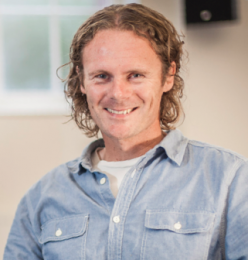 In this concluding part of the discussion that I have been having with Steve Boon, Executive Pastor of Emmanuel Church, Brighton, Steve offers some advice for those who are considering transitioning to a multi-site church.
In this concluding part of the discussion that I have been having with Steve Boon, Executive Pastor of Emmanuel Church, Brighton, Steve offers some advice for those who are considering transitioning to a multi-site church.
Nigel: This has been so helpful, Steve. If I try to summarise some of the things you have said I think they would be first that your experience with multi-site stresses the importance of flexibility. Second, there are great benefits in being located near where people live. Third, the ability to have a strong core of ministries and support services allows the site leader to focus on local issues. Fourth that each site can take on the shape and style most appropriate to the local demographic. Fifth, in your situation it provides an excellent training ground for church planters.
If people reading this interview think ‘I really want to go multi-site’ are there places you could point people to for resources and so on?
Steve: Depending on your context, or what country you are in, I definitely would go and talk to other multi-site churches. I heard sometime ago that multi-site doesn’t help you grow, so if your church isn’t growing then you should look at ‘why?’ rather than see the multi-site model as that which would spark the growth. You should also look at what your vision is. For us it was church planting, developing leaders and trying to release people in all their gifting across the church in order to help people find their way back to God. Multi-site gives many opportunities for people to have a role which helps in shaping our decisions.
There are a few books on the market but I would definitely talk to people in your country and in a similar locality to yours. Multi-site isn’t a bolt-on; it tends to change everything that you do. Everything you currently do at some point needs to be aligned to multi-site. So if you are currently in one venue and have got multiple ministries, consider what ministries will be reproduced in other sites, what’s affordable, what’s not, what kind of Sunday service you will be looking to do and so on. Will you try to replicate a service which caters for 800 people in a location that can only seat 100, or would you scale it back? If you scale it back, what will you scale it back to? The provision of children’s work is always high on team, so how many teams will you need? What’s your critical launch number? Particularly, take it slow.
 Nigel: So it sounds as though the answer to my question is a lot of research, go and talk to lots of people, and above all ask God. Thanks Steve very much. That gives a real insight into your experience with transitioning a church to being multi-site.
Nigel: So it sounds as though the answer to my question is a lot of research, go and talk to lots of people, and above all ask God. Thanks Steve very much. That gives a real insight into your experience with transitioning a church to being multi-site.
Resources
Steve closed the interview with some specific ways in which people can be helped:
As you can tell I love talking about structure, vision and multi-site so I would be more than happy to chat with anyone thinking of considering to implement a transition to multi-site. My email is sboon@weareemmanuel.com.
Other possible contacts you may wish to explore within the wider Newfrontiers family are:
Christ Church, Manchester, which has a good model of planting sites in a local city, and Colin Baron’s Broadcast Network which provides a very full resource of church planting material and downloads, as well as regular webinars.
Other Newfrontiers Churches which have also used a multi-site approach are Kings Church (contact address), Jubilee Church (contact address) and Everyday Church (contact address), all in London.
Other useful contacts:
Emmanuel Church also benefited greatly from Jim Tomberlin (formerly Willow Creek, USA) and he runs a really helpful website platform and coaching facility, Multisite Solutions.
This concludes the interviews with Steve Boon but next time I want you to watch an interview I had with another Steve, Steve Tibbert who leads the Kings Church (above). He will talk about building a Culturally Diverse Multi-site Church.
